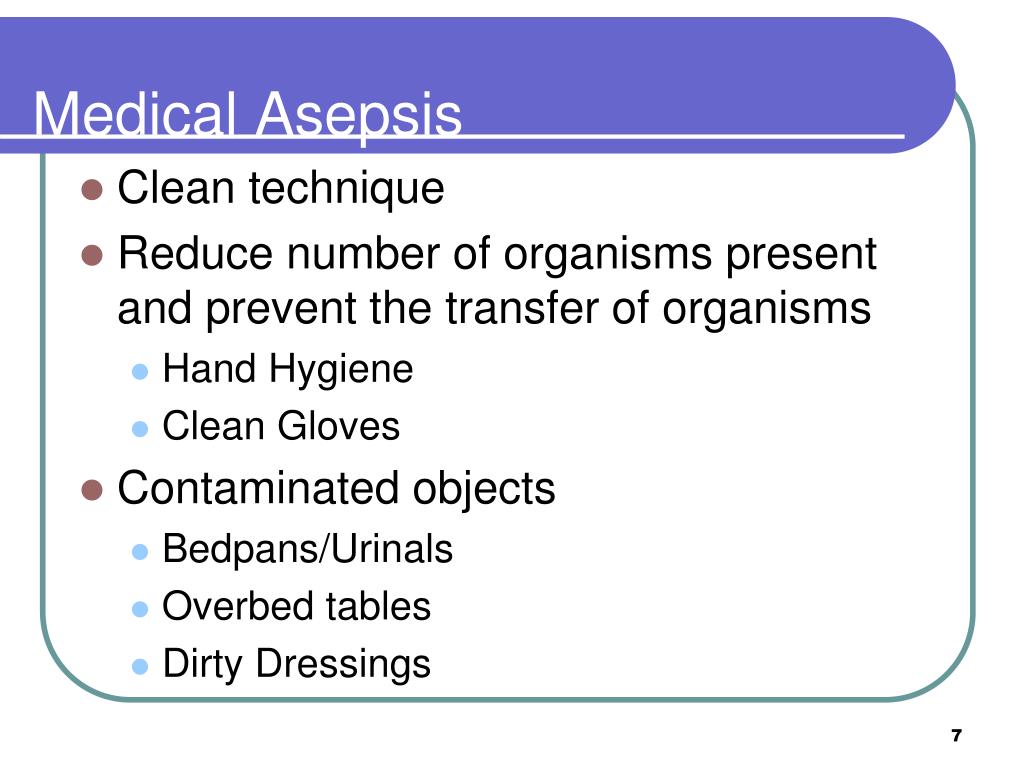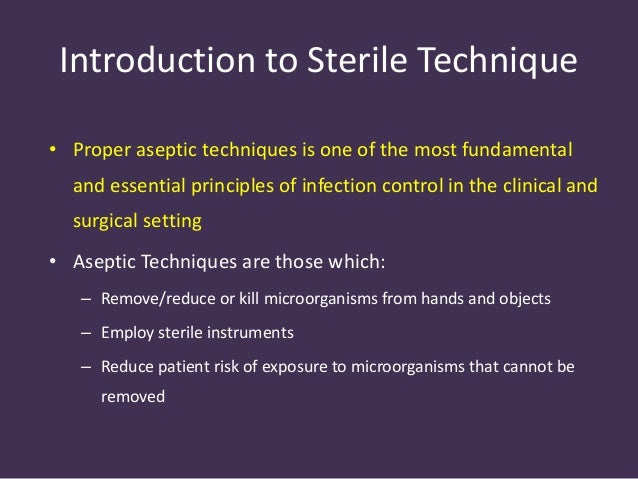

#STERILE ASEPSIS SKIN#
The aim of this study was to evaluate two pre-surgical skin asepsis protocols as a preventive measure of SSI in dogs, namely an aqueous solution of 7.5% povidone-iodine or an alcoholic solution of 2% chlorhexidine. Therefore, it is vital to clarify which is the most efficient protocol for preventing bacterial growth and the dissemination of multiresistant pathogenic bacteria, such as MRSP and MRSA. To date, studies comparing different pre-surgical skin asepsis protocols with application in veterinary medicine are scarce. aureus is also isolated from SSI, its occurrence is less frequent. Due to its high resistance levels, the incidence of MRSP is an even more relevant problem than methicillin-resistant S. There is a great concern about MRSP, which is the main cause of surgical site infections in some regions and its treatment is greatly hampered by the high levels of antimicrobial resistance. pseudintermedius (MRSP) in dogs and cats. It is also important to refer that in the last decade there has been a rapid emergence of infections by methicillin-resistant S. aureus is commensal in humans, and the presence of S. pseudintermedius is commensal in dogs, whereas S. ĭue to their commensal and opportunistic nature, staphylococci are the main bacterial agents isolated from surgical site infections in dogs, being Staphylococcus pseudintermedius the most frequent. For instance, in bitches undergoing ovariohysterectomy, 0.3% stabilized glutaraldehyde and alcohol (SG + A), 0.3% SG and water, and 4% chlorhexidine gluconate tincture revealed to be equally effective. In addition, different skin asepsis protocols may be adopted according to the location of surgery in dogs. In veterinary medicine there is no agreement on which biocide has the greatest efficacy in reducing the skin microbiota, aiming at preventing SSI development. The World Health Organization (WHO) as well The Center for Disease Control and Prevention (CDC) recommended the use of alcohol-based agents for the skin asepsis of patients undergoing surgery. With the aim of standardize pre-, intra- and post- surgical procedures to prevent surgical site infections in human medicine, some guidelines were recently developed.

Since most SSI are caused by microorganisms from the commensal microbiota of the patient, it is important to perform and ensure efficient pre-surgical skin asepsis. These infections remain a significant cause of morbidity and mortality worldwide, being responsible for significant healthcare costs. Surgical site infections (SSI) are the most common type of medical-related infection in developing countries, and the second most frequent type in Europe and the United States. Pre-surgical skin asepsis protocols with povidone-iodine or chlorhexidine showed similar efficacy in the elimination of methicillin resistant bacteria and preventing surgical site infections in dogs undergoing surgery. False positives were mainly other staphylococci species, as well as Enterobacteriaceae. Also, the logarithmic reduction of the bacterial quantification from pre- and post-asepsis time, was not statistically different for povidone-iodine (6.51 ± 1.94 log10) and chlorhexidine (6.46 ± 2.62 log10) protocol.įrom the 39% pre-asepsis swabs which showed bacterial growth in MRSA modified chromogenic agar medium, only one isolate was identified as Staphylococcus aureus and one as S. In only 9% of the cases a significant bacterial logarithmic reduction was not observed, indicating possible resistance to these agents. Most samples collected at the post-asepsis did not present bacterial growth, both for the animals subjected to the povidone-iodine (74%) or to the chlorhexidine (70%) protocols. For each dog, two skin swab samples were collected at pre-asepsis and post-asepsis, for bacterial quantification by conventional techniques and isolation of methicillin-resistant species. A total of 46 animals were randomly assigned for an asepsis protocol with an aqueous solution of 7.5% povidone-iodine or with an alcoholic solution of 2% chlorhexidine.

The aim of this study was to evaluate the effectiveness of two pre-surgical skin asepsis protocols in dogs. However, in veterinary medicine there is no agreement on which biocide is the most effective. Pre-surgical asepsis of the skin is one of the preventive measures performed to reduce SSI incidence and also antibiotic resistance dissemination. Most of surgical site infections (SSI) are caused by commensal and pathogenic agents from the patient’s microbiota, which may include antibiotic resistant strains.


 0 kommentar(er)
0 kommentar(er)
